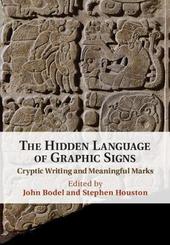
|
The Hidden Language of Graphic Signs: Cryptic Writing and Meaningful Marks
Hardback
Main Details
Description
A common belief is that systems of writing are committed to transparency and precise records of sound. The target is the language behind such marks. Readers, not viewers, matter most, and the most effective graphs largely record sound, not meaning. But what if embellishments mattered deeply - if hidden writing, slow to produce, slow to read, played as enduring a role as more accessible graphs? What if meaningful marks did service alongside records of spoken language? This book, a compilation of essays by global authorities on these subjects, zeroes in on hidden writing and alternative systems of graphic notation. Essays by leading scholars explore forms of writing that, by their formal intricacy, deflect attention from language. The volume also examines graphs that target meaning directly, without passing through the filter of words and the medium of sound. The many examples here testify to human ingenuity and future possibilities for exploring enriched graphic communication.
Author Biography
John Bodel is W. Duncan MacMillan II Professor of Classics at Brown University and Director of the U.S. Epigraphy Project. A specialist in the epigraphic cultures of the ancient Mediterranean, he writes about Roman history and literature and is the recipient of fellowship awards from ACLS, NEH, and the Andrew Mellon Foundation. Stephen Houston serves as the Dupee Family Professor of Social Science at Brown University. A specialist in writing systems and Classic Maya civilization, Houston is the recipient of a MacArthur 'genius' award and the Grand Cross of the Order of the Quetzal, Guatemala's highest honor.
Reviews'... the book editors-classicist John Bodel and Mayanist Stephen Houston - are to be congratulated on assembling experts to produce a 'first' in this relatively neglected field.' Andrew Robinson, Miverva
|